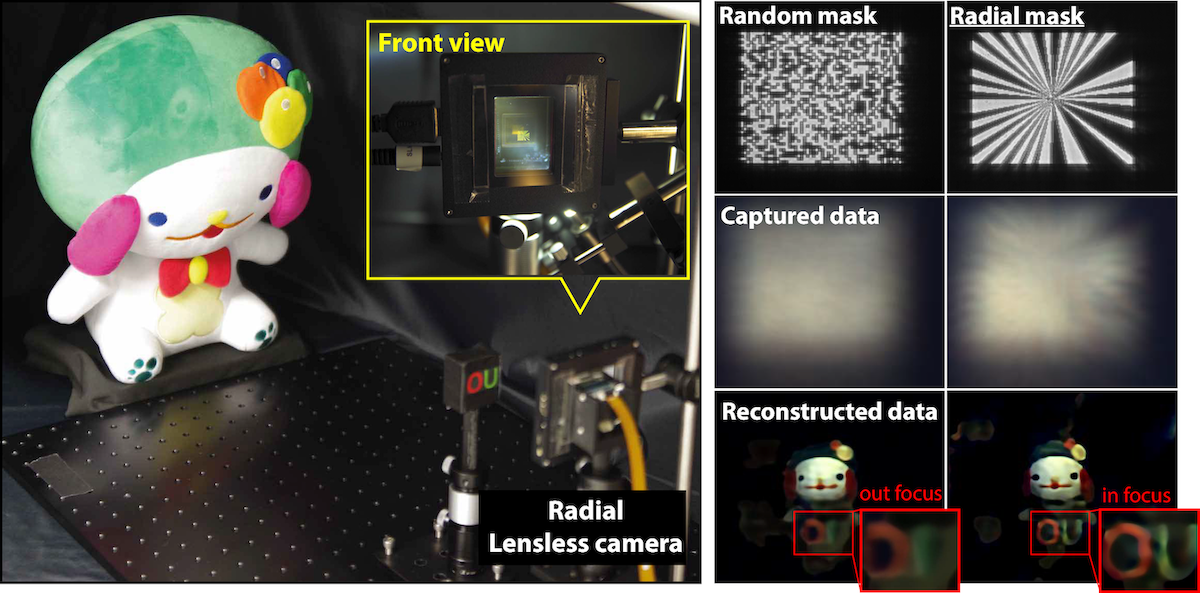One of the most recognized parts of a camera, the lens, is no longer required to shoot an image that is totally in focus. Instead, a small mask over the image sensor will suffice. However, the type of mask that is applied significantly impacts the sharpness of the resultant picture.
 Extended depth-of-field imaging by a lensless camera using an optimized radial mask.CC BY, 2023 Nakamura et al., Extended Depth-of-Field Lensless Imaging using an Optimized Radial Mask. Image Credit: IEEE Transactions on Computational Imaging
Extended depth-of-field imaging by a lensless camera using an optimized radial mask.CC BY, 2023 Nakamura et al., Extended Depth-of-Field Lensless Imaging using an Optimized Radial Mask. Image Credit: IEEE Transactions on Computational Imaging
Osaka University researchers proposed an improved radial-coded mask with expanded depth of field to sharpen objects in images' foreground and background in a new study published in IEEE Transactions on Computational Imaging.
One of the key limits as camera designs have become thinner and lighter has been the lens, which must be a specific size, shape, and distance from the image sensor to focus light onto it. In lensless cameras, the sensor captures a fuzzy image and then uses reconstruction algorithms to “focus” the image.
It is possible to do so because the information required to extract the image is encoded in the point spread function, which is the interaction between light and the mask in front of the sensor.
One advantage of a lensless camera is that its properties can be modified by intentionally adjusting its mask. For example, as in this study, its depth of field can be adjusted. The point spread function of traditional lensless cameras fluctuates depending on the subject’s distance, and the camera can only clearly catch subjects at a particular distance in a single reconstruction step.
The researchers intended to develop a lensless camera that focuses on foreground and background objects. That is, they needed a camera with a broad depth of field, and they discovered that a mask with parts radiating from the center-like rays of a starburst would suffice.
The Intelligent Media Systems group at Osaka University discovered that the number of sections and their thicknesses also affect the features. More thin parts emphasize small details, whereas fewer broader sections emphasize smooth areas. As a result, the team employed an optimization technique to establish the ideal mask for all pieces and discovered that a certain combination of thin and thicker areas worked well.
The masks were evaluated using simulation and an actual prototype, and the depth of field was found to be enlarged.
Lensless cameras are smaller, thinner, and lighter than typical cameras, and improving depth of focus is a significant step toward producing a device that can be utilized in real-world applications like medical and industrial inspection. Furthermore, there are numerous types and combinations of masks to investigate, which might lead to lensless cameras being a viable and widespread technology in the future.
Journal Reference:
Neto, J. R. C. S. A. V. S., et al. (2023) Extended Depth-of-Field Lensless Imaging Using an Optimized Radial Mask. IEEE Transactions on Computational Imaging. doi:10.1109/TCI.2023.3318992